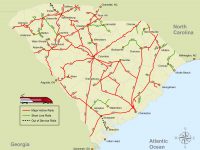4/9, full issue: On I-526; Likely friendship; Not wasting time
IN THIS ISSUE
MYSTERY PHOTO: Gold top
FOCUS: Interstate 526 completion isn’t actionable plan, but smoky scheme
COMMENTARY, Brack: S.C. friendship touted in new book isn’t all that unlikely
IN THE SPOTLIGHT: Magnolia Plantation and Gardens
CAREERS, Fanning: Video on how to stop wasting time
GOOD NEWS: New education report seeks to provoke education change
FEEDBACK: Send us a letter
S.C. ENCYCLOPEDIA: Mill villages in South Carolina
CALENDAR, April 9+: Beers with dogs and books, more









 We Can Do Better, South Carolina!
We Can Do Better, South Carolina!

























Recent Comments